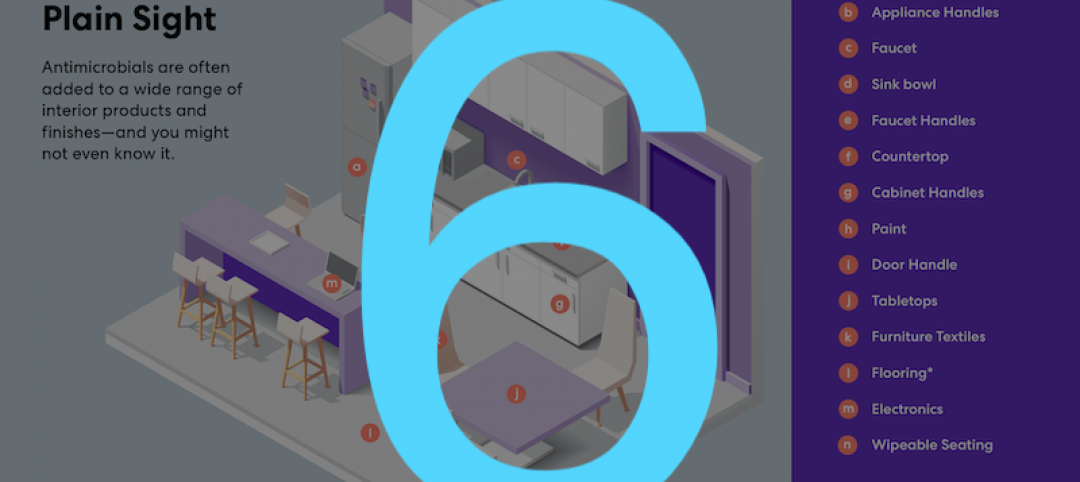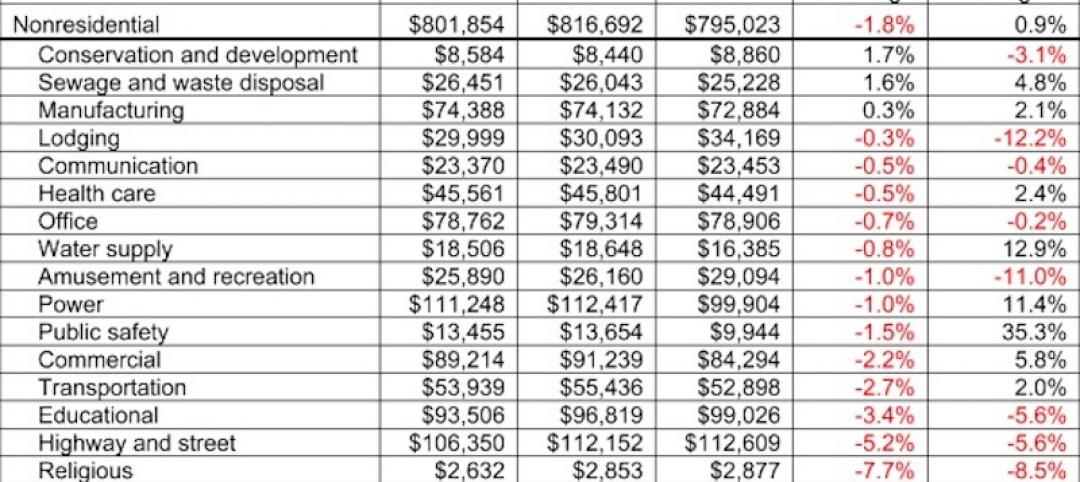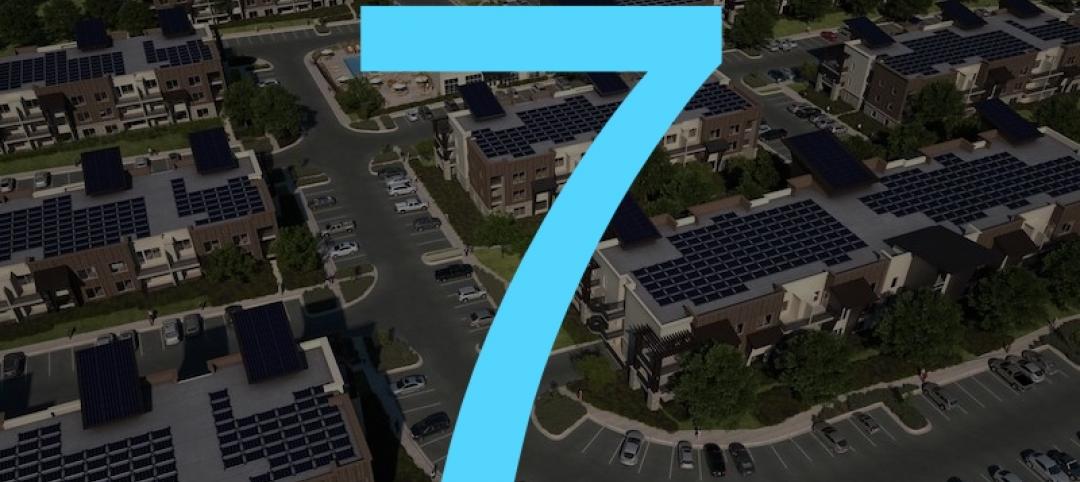Data from the first quarter U.S. Chamber of Commerce Commercial Construction Index reveals contractors are growing more optimistic, mostly driven by a rise in revenue expectations. They also have better outlooks on hiring and equipment spending plans as business concerns related to the coronavirus pandemic lessen.
In the first quarter of this year, 36% of contractors expect their revenue to increase over the next year, a jump of 11 percentage points from 25% in Q4 2020. Eighty-seven percent expect their revenue to either stay the same or increase, up from 86% last quarter. Most (86%) contractors also report a moderate to high level of confidence that the U.S. market will provide enough new business in the next year. Nearly a quarter (24%) report a high level of confidence, up from 19% in Q4 2020.
Hiring plans are also positive as close to half (46%) of contractors say they will employ more people in the next six months, up from 37% in Q4 2020. The same percentage (46%) expect to keep the same number of workers, and just 3% expect to reduce their staffing, down from 12% in Q4 2020.
“As vaccines continue to roll out, contractors are expecting to hire more workers and anticipating good times ahead. The industry still has a way to go to return to pre-pandemic levels, but rising optimism in the commercial construction industry is a positive sign for the broader economy,” said U.S. Chamber of Commerce Executive Vice President and Chief Policy Officer Neil Bradley. “However, finding skilled workers was a critical issue before the pandemic, and while it has remained a chronic problem over the last year, heightened concern may be emerging again as contractors look to hire. The U.S. Chamber is committed to supporting businesses in retraining and making sure the economy has the skilled workforce it needs.”
The boost in revenue expectations drove a three-point rise in this quarter’s overall Index score to 62 from 59 in Q4 2020. The score for revenue expectations, one the Index’s three leading indicators, jumped five points to 57, while contractors’ confidence in new business opportunities rose two points to 59. Despite the gains, the Index remains 12 points below its score of 74 from Q1 2020 before the pandemic.
Skilled Worker Shortage Causes Ongoing Challenges
Alongside the positive signs of recovery come workforce challenges. This quarter, 85% of contractors report moderate to high levels of difficulty finding skilled workers, up from 83% in Q4 2020. Of those, 45% report a high level of difficulty, up from 42% last quarter, but still down 10 percentage points year-over-year from 55% in Q1 2020 before the pandemic.
Meanwhile, 88% report a moderate to high degree of concern about their workers having adequate skill levels. Forty-six percent report a high degree of concern, up from 36% in Q4 2020. Almost all (94%) contractors who reported a moderate to high degree of concern expect the problem with workers having adequate skill levels will stay the same or get worse in the next six months.
Lumber Concerns Ease, Cost Fluctuation Concerns Rise
Similar to last quarter, 71% of contractors say they face at least one material shortage. Of those, 22% are experiencing a shortage of wood/lumber (down from 31% in Q4 2020), followed by steel (14%), and pipe/PVC (10%).
This quarter, more (82%) contractors say cost fluctuations have a moderate to high impact on their business, up eight percentage points from Q4 2020, and up 17 percentage points year-over-year. Of those experiencing the impact of cost fluctuations, 43% said wood/ lumber is the product of most concern (down from 61% in Q4 2020), followed by steel (35%), and copper (27%).
Additional findings:
— Tariff and trade concerns are up. More (35%) contractors say steel and aluminum tariffs will have a high to very high degree of impact on their business in the next three years, up from 24% saying the same in Q4 2020.
— 37% of contractors plan to increase spending on tools and equipment, increasing from 28% in Q2 2020. Before the pandemic (Q1 2020), 54% said they planned to increase spending.
— 80% of contractors are still experiencing delays due to COVID-19, with an average share of 23% of their projects delayed, but that share is expected to drop to 15% looking ahead six months.
— 58% say worker health and safety remains a top concern for their business, followed by more project shutdowns/delays (50%), fewer projects (35%), and less availability of building products (33%).
The Index comprises three leading indicators to gauge confidence in the commercial construction industry, generating a composite Index on the scale of 0 to 100 that serves as an indicator of health of the contractor segment on a quarterly basis.
The Q1 2021 results from the three key drivers are:
— Revenue: Contractors’ revenue expectations over the next 12 months increased to 57 (up five points from Q4 2020).
— New Business Confidence: The overall level of contractor confidence increased to 59 (up two points from Q4 2020).
— Backlog: This indicator remained steady from Q4 2020 at 69.
The research was developed with Dodge Data & Analytics (DD&A), the leading provider of insights and data for the construction industry, by surveying commercial and institutional contractors.
Note: In last quarter’s report, released on December 10, 2020, the overall index score and backlog component score were incorrectly reported due to a data tallying error. The correct overall index score for Q4 2020 was 59 (originally reported as 60). The correct score for backlog was 69 (originally reported as 70).
Related Stories
Market Data | Jun 9, 2020
6 must reads for the AEC industry today: June 9, 2020
OSHA safety inspections fall 84% and the office isn't dead.
Market Data | Jun 8, 2020
Construction jobs rise by 464,000 jobs but remain 596,000 below recent peak
Gains in may reflect temporary support from paycheck protection program loans and easing of construction restrictions, but hobbled economy and tight state and local budgets risk future job losses.
Market Data | Jun 5, 2020
7 must reads for the AEC industry today: June 5, 2020
The world's first carbon-fiber reinforced concrete building and what will college be like in the fall?
Market Data | Jun 4, 2020
7 must reads for the AEC industry today: June 4, 2020
Construction unemployment declines in 326 of 358 metro areas and is the show over for AMC Theatres?
Market Data | Jun 3, 2020
Construction employment declines in 326 out of 358 metro areas in April
Association says new transportation proposal could help restore jobs.
Market Data | Jun 3, 2020
6 must reads for the AEC industry today: June 3, 2020
5 ways to improve cleanliness of public restrooms and office owners are in no hurry for tenants to return.
Market Data | Jun 2, 2020
Architects, health experts release strategies, tools for safely reopening buildings
AIA issues three new and enhanced tools for reducing risk of COVID-19 transmission in buildings.
Market Data | Jun 2, 2020
5 must reads for the AEC industry today: June 2, 2020
New Luxembourg office complex breaks ground and nonresidential construction spending falls.
Market Data | Jun 1, 2020
Nonresidential construction spending falls in April
Of the 16 subcategories, 13 were down on a monthly basis.
Market Data | Jun 1, 2020
7 must reads for the AEC industry today: June 1, 2020
Energy storage as an amenity and an entry-point for wellness screening everywhere.
















